ENVIRONMENT.
Mas del Botó is located in the Cortiella Valley, in the term of Alforja, Baix Camp region, although geographically, geologically and landscape-wise it is considered part of the Priorat. It is one of the three areas included in the scope of the UNESCO Intangible Heritage of Humanity bid for Priorat that lie outside of Priorat county.
From a winemaking point of view, Mas del Botó historically belongs to the D.O. Tarragona.
Hydrologically it is within the Ebro Basin. The headwaters of the Cortiella river, which gives its name to the Valley, are found on this estate. It is a tributary of the Siurana river..
ENVIRONMENT.
Mas del Botó is located in the Cortiella Valley, in the term of Alforja, Baix Camp region, although geographically, geologically and landscape-wise it is considered part of the Priorat. It is one of the three areas included in the scope of the UNESCO Intangible Heritage of Humanity bid for Priorat that lie outside of Priorat county.
From a winemaking point of view, Mas del Botó historically belongs to the D.O. Tarragona.
Hydrologically it is within the Ebro Basin. The headwaters of the Cortiella river, which gives its name to the Valley, are found on this estate. It is a tributary of the Siurana river..
ENVIRONMENT.
Mas del Botó is located in the Cortiella Valley, in the term of Alforja, Baix Camp region, although geographically, geologically and landscape-wise it is considered part of the Priorat. It is one of the three areas included in the scope of the UNESCO Intangible Heritage of Humanity bid for Priorat that lie outside of Priorat county.
From a winemaking point of view, Mas del Botó historically belongs to the D.O. Tarragona.
Hydrologically it is within the Ebro Basin. The headwaters of the Cortiella river, which gives its name to the Valley, are found on this estate. It is a tributary of the Siurana river..
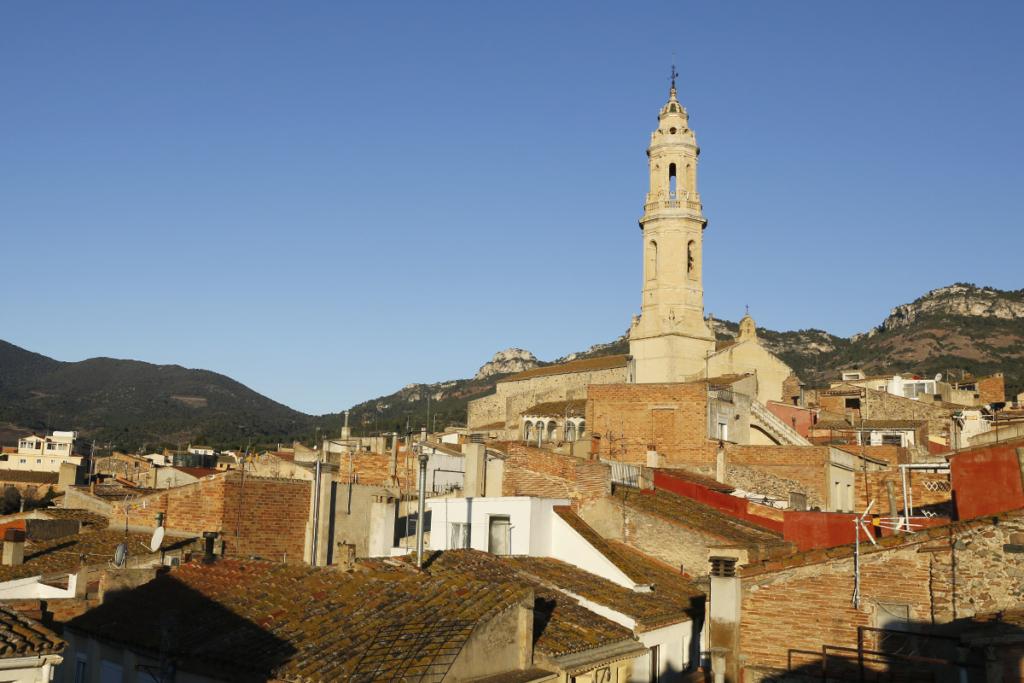
Information:
Alforja is located at the foot of a mountainous area and its urban nucleus developed around the parish church dedicated to Sant Miquel. The church is 17th century building with a neoclassical bell tower. Nearby castle ruins are a testament to the former glory of this town. The festival of Alforja is celebrated on September 29, coinciding with the festivity of San Miguel. In August you can enjoy cultural events such as the Festa del Pataco.

Information:
Alforja is located at the foot of a mountainous area and its urban nucleus developed around the parish church dedicated to Sant Miquel. The church is 17th century building with a neoclassical bell tower. Nearby castle ruins are a testament to the former glory of this town. The festival of Alforja is celebrated on September 29, coinciding with the festivity of San Miguel. In August you can enjoy cultural events such as the Festa del Pataco.

Information:
Alforja is located at the foot of a mountainous area and its urban nucleus developed around the parish church dedicated to Sant Miquel. The church is 17th century building with a neoclassical bell tower. Nearby castle ruins are a testament to the former glory of this town. The festival of Alforja is celebrated on September 29, coinciding with the festivity of San Miguel. In August you can enjoy cultural events such as the Festa del Pataco.
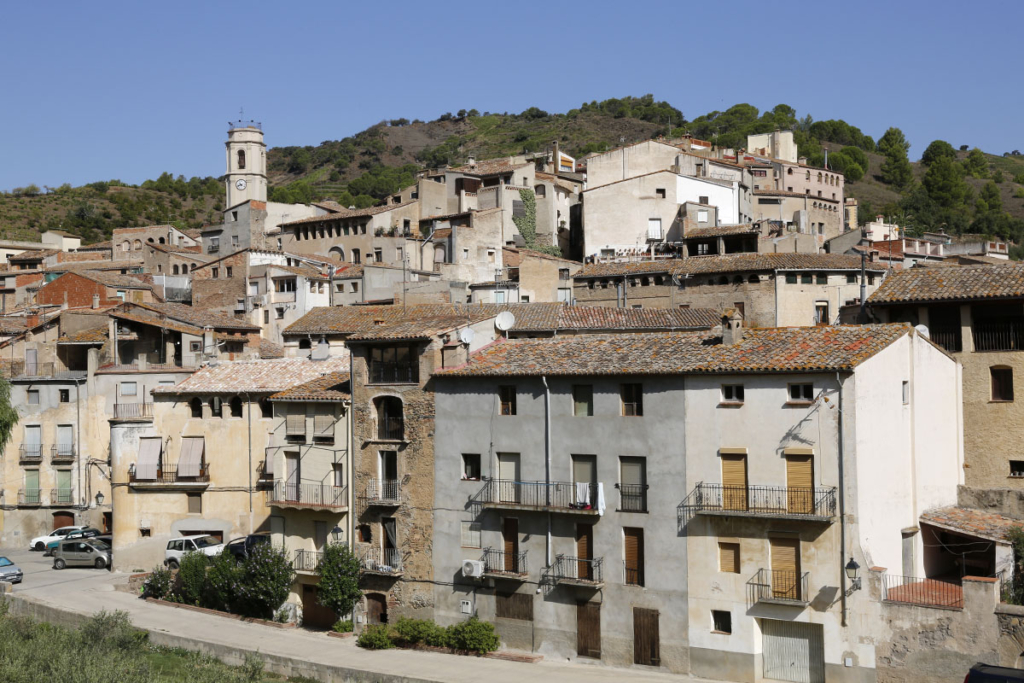
Information:
To the east of Priorat, a few kilometers from Coll de la Teixeta, we find Porrera. It extends along the valley of the Cortiella river, from El Molló, on the border with the Baix Camp, and where the Garranxa ravine, a tributary of the Cortiella, begins, until its confluence with the Siurana river. The town is located to the right of the Cortiella river.

Information:
To the east of Priorat, a few kilometers from Coll de la Teixeta, we find Porrera. It extends along the valley of the Cortiella river, from El Molló, on the border with the Baix Camp, and where the Garranxa ravine, a tributary of the Cortiella, begins, until its confluence with the Siurana river. The town is located to the right of the Cortiella river.

Information:
To the east of Priorat, a few kilometers from Coll de la Teixeta, we find Porrera. It extends along the valley of the Cortiella river, from El Molló, on the border with the Baix Camp, and where the Garranxa ravine, a tributary of the Cortiella, begins, until its confluence with the Siurana river. The town is located to the right of the Cortiella river.
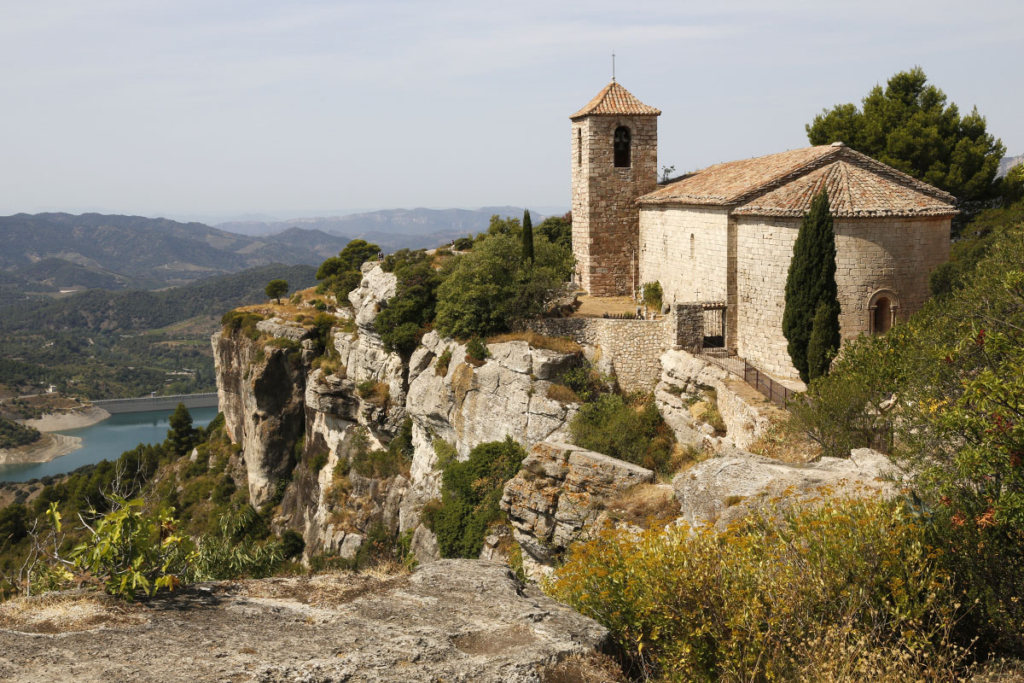
Information:
Siurana can be considered as one of the most beautiful towns in the province. Sitting on a huge limestone rock and surrounded by the Estopiñà torrent, it presides over a magnificent panoramic view of the Siurana river valley and its reservoir. Siurana de Tarragona was declared a picturesque spot in 1961. Among its many places to visit, the Romanesque church and the remains of the castle stand out.

Information:
Siurana can be considered as one of the most beautiful towns in the province. Sitting on a huge limestone rock and surrounded by the Estopiñà torrent, it presides over a magnificent panoramic view of the Siurana river valley and its reservoir. Siurana de Tarragona was declared a picturesque spot in 1961. Among its many places to visit, the Romanesque church and the remains of the castle stand out.

Information:
Siurana can be considered as one of the most beautiful towns in the province. Sitting on a huge limestone rock and surrounded by the Estopiñà torrent, it presides over a magnificent panoramic view of the Siurana river valley and its reservoir. Siurana de Tarragona was declared a picturesque spot in 1961. Among its many places to visit, the Romanesque church and the remains of the castle stand out.
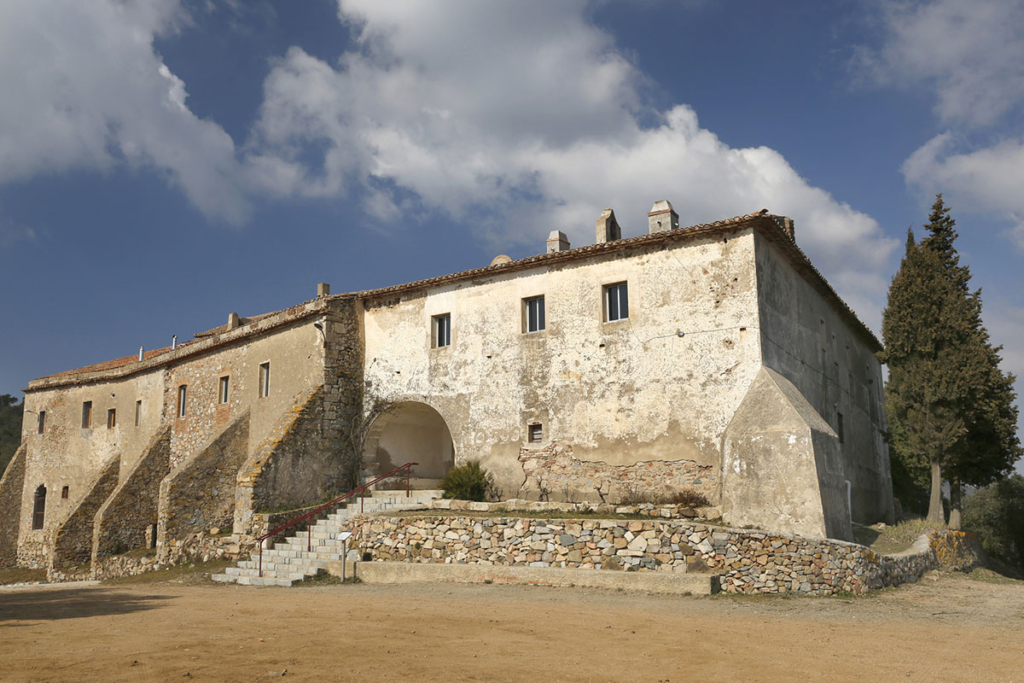
HERMITAGE OF PUIGCERVER
A former religous center in a magical natural setting
> Distance: 4 km
> Tel: 646 06 14 22 – 670 37 84 95.
Information:
The Hermitage of the Virgin of Puigcerver boasts impressive views, located in the upper part of the mountain range of the same name, at 787 meters of altitude and right on the partition between the municipality of Alforja and that of Riudecols. From ancient times, a legend passed down through the years tells us of the appearance, on the trunk of a rowan tree, of an image of the Virgin Mary, found by three young men sent to discover the mystery of a strange glow from this area.

ERMITA DE PUIGCERVER
A former religous center in a magical natural setting
> Distance: 4 km
> Tel: 646 06 14 22 – 670 37 84 95.
Information:
The Hermitage of the Virgin of Puigcerver boasts impressive views, located in the upper part of the mountain range of the same name, at 787 meters of altitude and right on the partition between the municipality of Alforja and that of Riudecols. From ancient times, a legend passed down through the years tells us of the appearance, on the trunk of a rowan tree, of an image of the Virgin Mary, found by three young men sent to discover the mystery of a strange glow from this area.

ERMITA DE PUIGCERVER
A former religous center in a magical natural setting
> Distance: 4 km
> Tel: 646 06 14 22 – 670 37 84 95.
Information:
The Hermitage of the Virgin of Puigcerver boasts impressive views, located in the upper part of the mountain range of the same name, at 787 meters of altitude and right on the partition between the municipality of Alforja and that of Riudecols. From ancient times, a legend passed down through the years tells us of the appearance, on the trunk of a rowan tree, of an image of the Virgin Mary, found by three young men sent to discover the mystery of a strange glow from this area.
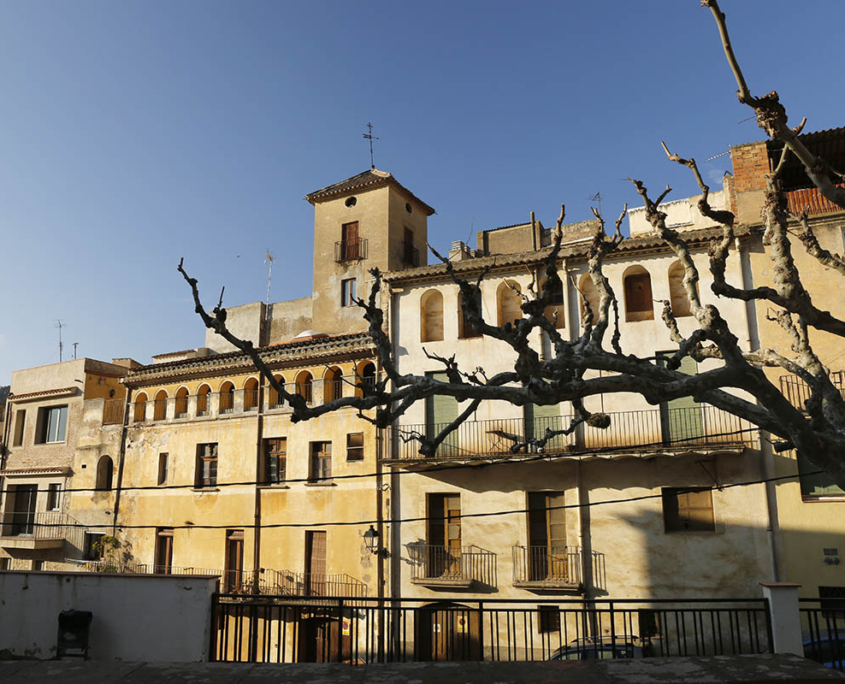
Information:
Riudecols is a municipality in Catalonia belonging to the province of Tarragona, in the Baix Camp region. According to 2014 data, its population was 1254 inhabitants. The name is believed to come from Riu-de-còdols (River of Pebbles), and from there it evolved to the current name. It is believed that this name was given to it because the city was founded next to a torrent when water still flowed throughout the year.

Information:
Riudecols is a municipality in Catalonia belonging to the province of Tarragona, in the Baix Camp region. According to 2014 data, its population was 1254 inhabitants. The name is believed to come from Riu-de-còdols (River of Pebbles), and from there it evolved to the current name. It is believed that this name was given to it because the city was founded next to a torrent when water still flowed throughout the year.

Information:
Riudecols is a municipality in Catalonia belonging to the province of Tarragona, in the Baix Camp region. According to 2014 data, its population was 1254 inhabitants. The name is believed to come from Riu-de-còdols (River of Pebbles), and from there it evolved to the current name. It is believed that this name was given to it because the city was founded next to a torrent when water still flowed throughout the year.
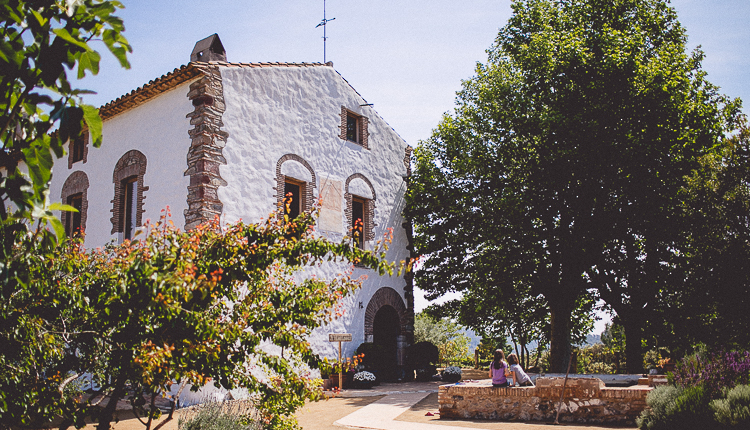
Information:
About one km before reaching Riudecols on the Puigcerver road, is La Avellana, in a parcel known as the Mas d’en Cabré. A century-old farmhouse in an idyllic setting, surrounded by hazelnut trees and listed as a heritage asset. The farmhouse has been recently restored carrying out exhaustive work that unites tradition, imagination and modernity. It is currently used for weddings and banquets. Without a doubt it is a place that we recommend you visit on the way to Riudecols.

Information:
About one km before reaching Riudecols on the Puigcerver road, is La Avellana, in a parcel known as the Mas d’en Cabré. A century-old farmhouse in an idyllic setting, surrounded by hazelnut trees and listed as a heritage asset. The farmhouse has been recently restored carrying out exhaustive work that unites tradition, imagination and modernity. It is currently used for weddings and banquets. Without a doubt it is a place that we recommend you visit on the way to Riudecols.

Information:
About one km before reaching Riudecols on the Puigcerver road, is La Avellana, in a parcel known as the Mas d’en Cabré. A century-old farmhouse in an idyllic setting, surrounded by hazelnut trees and listed as a heritage asset. The farmhouse has been recently restored carrying out exhaustive work that unites tradition, imagination and modernity. It is currently used for weddings and banquets. Without a doubt it is a place that we recommend you visit on the way to Riudecols.
DO YOU WANT TO VISIT US ?
The wine tour consists of a walk through the vineyard, a visit to the old wineries of the 17th century and the new facilities. It includes a tasting of the wines accompanied with a food pairing of local products.
DO YOU WANT TO VISIT US ?
The wine tour consists of a walk through the vineyard, a visit to the old wineries of the 17th century and the new facilities. It includes a tasting of the wines accompanied with a food pairing of local products.
DO YOU WANT TO VISIT US ?
The wine tour consists of a walk through the vineyard, a visit to the old wineries of the 17th century and the new facilities. It includes a tasting of the wines accompanied with a food pairing of local products.





